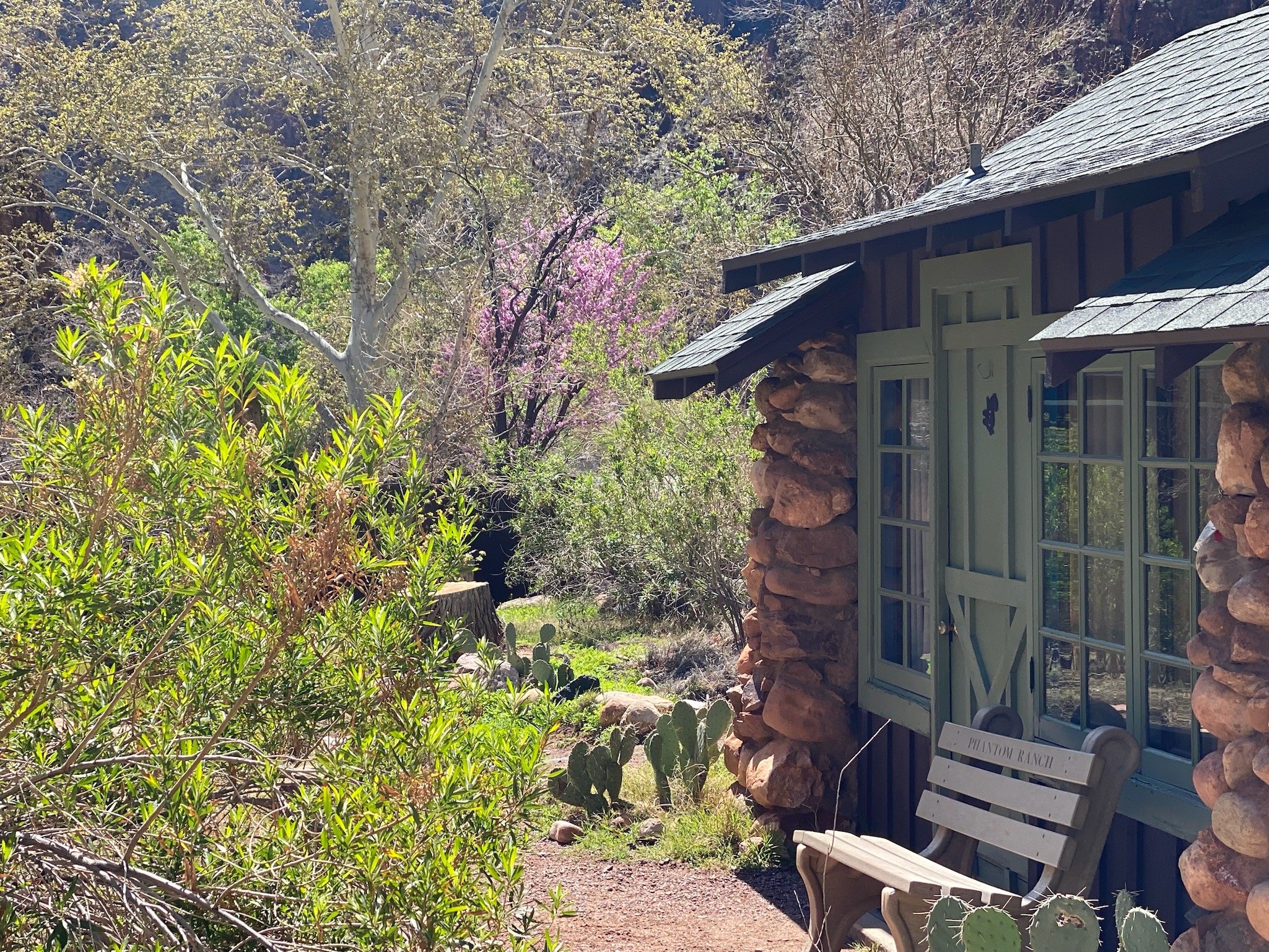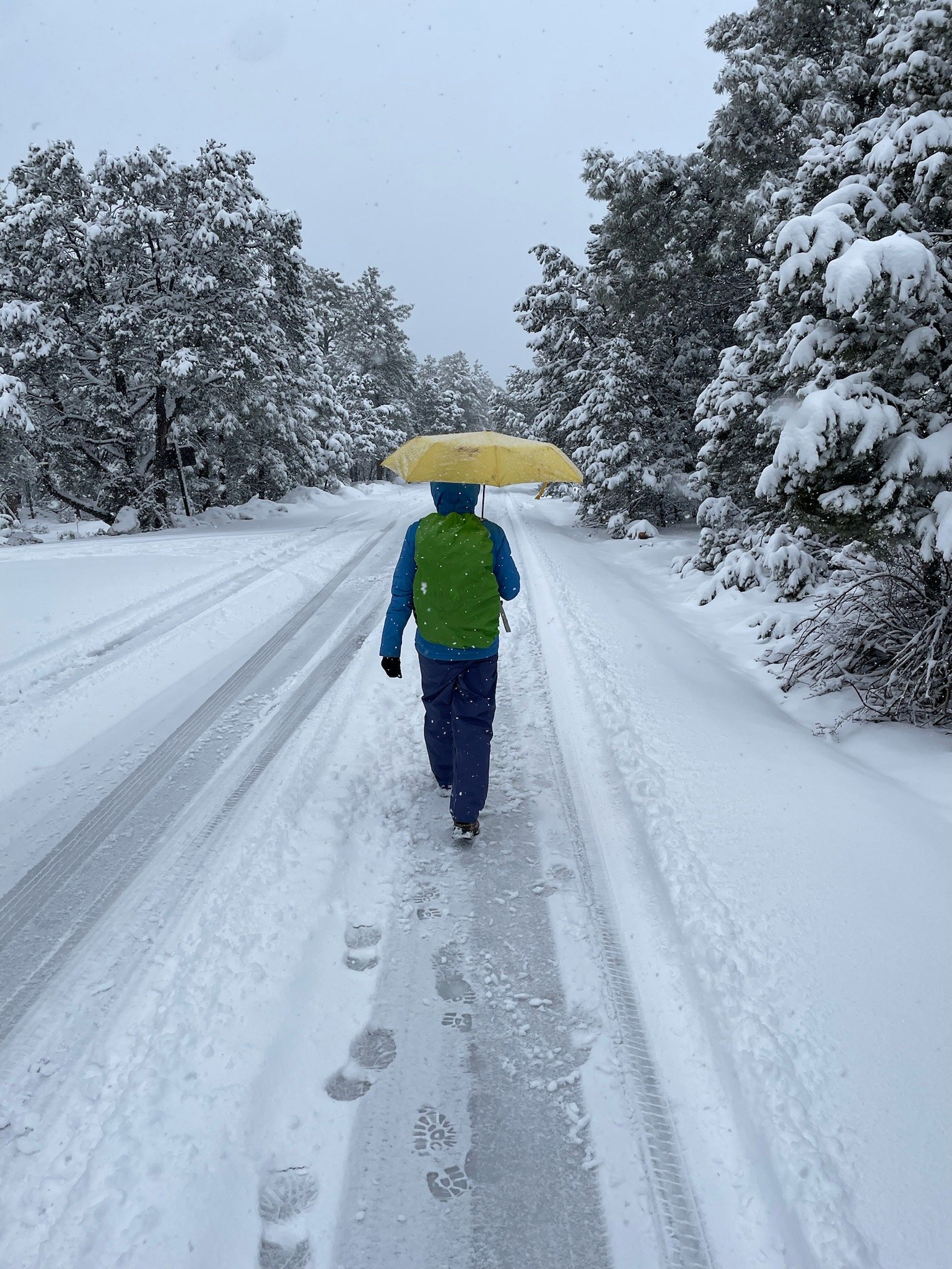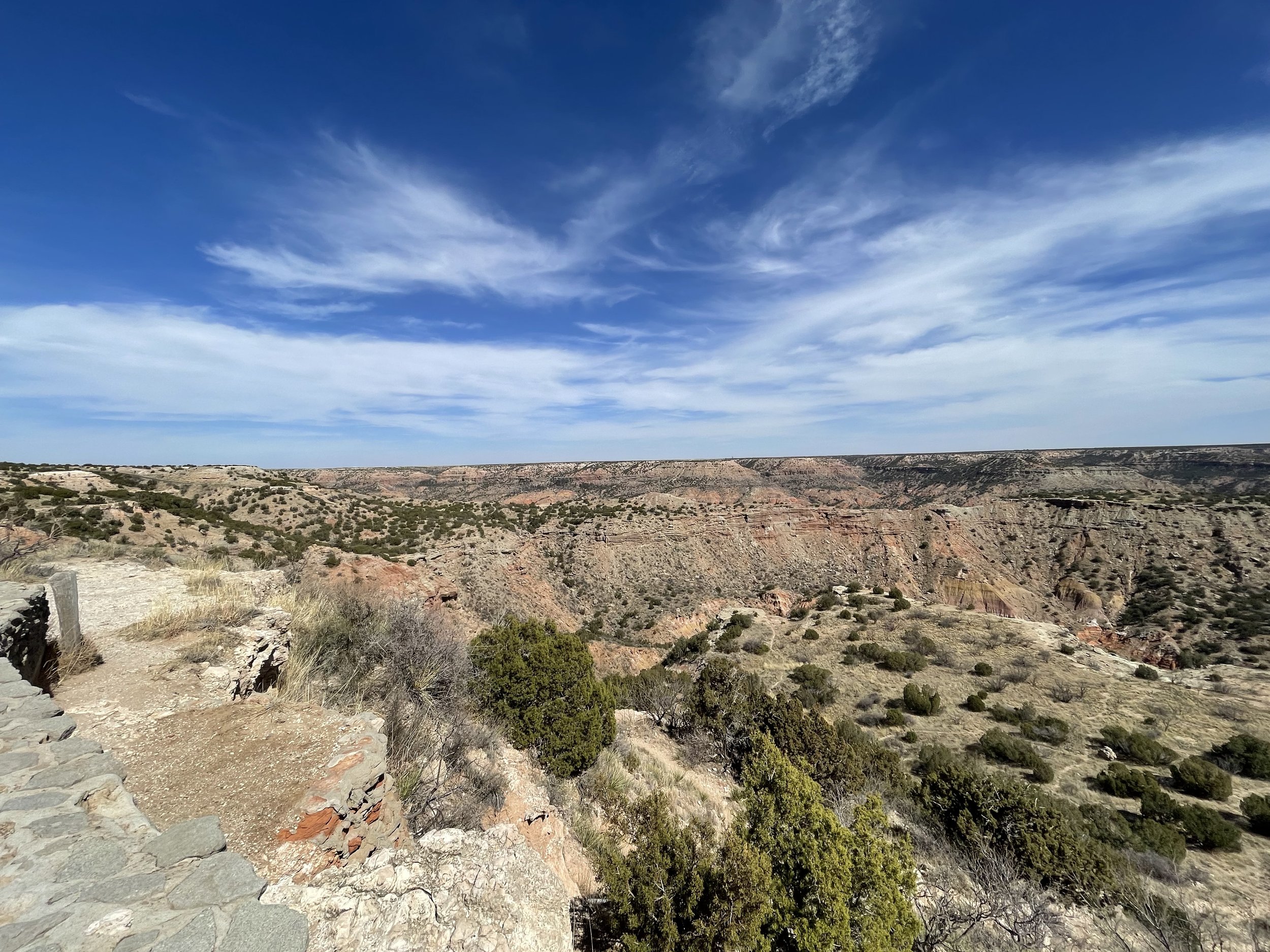Warning Signs!
“Caution! Down is Optional. Up is Mandatory” read the sign at the trailhead.
Once you hike into the canyon there are only two ways out. The first is under your own power. The second is by helicopter, which is a reservation only available to those who die down there. We did not aspire to be part of that select company.
The morning that we were to hike down to the bottom of the Grand Canyon, we pushed open the door of the van to reveal that a fresh layer of snow had fallen overnight. In fact, it was still snowing. A wicked wind was blowing through the campground forcing us to make our final preparations in the van with the doors closed virtually ensuring we would forget something important.
With packs packed and boots laced, we drove over the icy roads to the Backcountry Information Center where the Hiker Express bus runs on the hour to the South Kaibab trailhead. The bus was filled with hikers from far flung places like Georgia and Canada. The bus disgorged us at the trailhead, and we struggled to put our crampons over our boot soles without falling over in the snow.
That done, we snapped a few obligatory trailhead pics and started down.
Going down was not difficult. The snow had stopped, and the skies had cleared. The crampons held us firm on the ice and snow. As we descended the temperature rose increasing about 5 degrees F for each 1,000 feet of descent. After about a mile and a half, the snow was gone, and the crampons came off. We were prepared with a Garmin GPS, the Gaia App for iPhone, and a good old map and compass just in case. None of it was needed. The trail was clear and very easy to follow. Just look for (and try not to step in) the mule dung. Two mule trains passed us on their way up. The tourist mules are not running right now but the animals are still used to carry all the food and provisions for the lodge down and all the garbage back up.
Descending to the mighty (and murky) Colorado River.
It took us about 6 hours to descend to the bottom of the canyon.
The famed Phantom Ranch reachable only by foot, mule, or raft was built by the Civilian Conservation Corp in the 1930s and is a rustic beauty. We were very luck to score a cabin to ourselves. We arrived at about 2:30 pm, checked in, and confirmed our meal reservations. With lots of time before dinner, we settled in. We had a toilet and a sink in our cabin, but showers were in a separate and shared bathhouse. No matter. The showers were hot, and the water pressure was good. A real treat after our hike.
Meals are family style. Dinner was a simple affair. Salad, vegetarian chili, corn bread, and blondies for dessert. For meat eaters there was beef stew or (for an upcharge) steak. It was all-you-can eat and after our hike we could eat a lot.
We slept soundly in our heated cabin.
Cabin #6 at the famed Phantom Ranch. Photo: Barbara Raimondo
We had the next day free to explore the bottom of the canyon and relax. We checked out the campsite (where we would have been had we failed to get a cabin reservation) and did a short 10 km hike. It was a beautiful sunny day at the bottom of the canyon and plenty warm at about 20 degrees F higher than the rim.
After our hike under blue skies, I finished my book, Wild by Cheryl Strayed about a young woman who solo hikes the Pacific Crest Trail. A beautiful and moving story. I recommend.
Dinner that night was identical to the day before. They serve the exact same meal every day.
It was just as good.
During the meal we chatted with the server, a middle-aged man from Kentucky, who has been on the Ranch service staff for more than a year. Employees work 10 days and then have 4 days off. Their duties include cooking, serving meals, cleaning rooms and whatever else needs doing.
If workers choose to go up to the rim on their days off, one of the four days off is spent climbing out and another coming back down. When he chooses to leave, our companion heads off to Flagstaff, Arizona for a nice meal and a hotel with a hot tub. It seems like a solitary kind of life, juxtaposing the staggering beauty of living in the canyon with a profound separation from friends, family, and the world going on up above. I’d be curious to try it for, say, a week.
The following morning, we grabbed free coffee from the canteen and by 7 am we were on our way back to the rim by a different route, the Bright Angel Trail. Most hikers choose this route for the ascent. Though longer (10 miles vs. 8), it is, theoretically, less steep.
Don ‘t be like this guy! Be sensible, stay overnight at the Ranch!
The first few miles are, in fact, quite easy. The trail follows the river downstream and by the time you start to climb, you are actually 100 feet below the elevation of Phantom Ranch. At 3.5 miles your reach the lush and green Havasupai Gardens. Formerly known as Indian Gardens, this plateau is rich with water. A swift and clear stream runs through. The area was inhabited by native people long before Europeans arrived. Today there is a campground for backpackers, a ranger station, and a spigot for drinking water. We stopped to eat our sparse lunch of Lance Toasty Crackers and peanuts and to refill our bottles before the next part of the ascent.
After Havasupai the way grows much steeper, and the temperatures start to drop. The sun vanished and was replaced with freezing rain. The last mile and a half are the steepest and hardest. The rim seems to tower above for hours and never seems to get closer. The younger folk and the day hikers with no packs sailed past us. Soon we were once again trudging through the snow.
Compounding the effort, we could feel the air start to thin as we passed the 6,000-foot mark on our way up to the rim at 7,000 feet above sea level. Our muscles were spent and sore by the time we reached the top. There are those who say it is harder to go down than to go up. That was not the experience of this hiker. Gravity may be an illusion, but it is a terribly convincing one.
Once back at the rim a cold wind blew through our sweat drenched clothes, making it feel much colder than freezing. We had camping reservations for the night, but I suggested a hotel room with a warm bed and a hot shower assuming there was an opening at the Bright Angel Lodge just steps away. It didn’t take a lot of convincing for Barbara to come around to my point of view on the matter.
There was a cabin available, and we grabbed it, dining at the Pizza Pub in one of the lodges that evening. The pizza was nowhere near as good as mine but tasted mighty fine notwithstanding.
The following day we had reservations at the fancy El Tovar dining room where waiters in white shirts, black pants and bow ties serve up a bistro style fair. I had a bowl of butternut squash soup, a vegetarian quiche made with brie cheese and a side salad. We split a dessert of pear cheesecake served with a blackberry reduction. Staggeringly good.
We had planned to head from here to Bryce and Zion National Parks but a glance at the weather app would recommend otherwise. More cold, more snow. The Mohave National Preserve and Joshua Tree National Park look a bit more temperate at this time of year.
Five million people visit the canyon each year and climbing down even part way, is something they say fewer than one percent of visitors do. Yes, it was cold and hiking up was hard, but it was a once in a lifetime experience and I wouldn’t have changed a thing.
Years from now when asked how it was to hike to the bottom of the canyon, I’ll reply:
“Grand. Just Grand.”
Our route according to the Gaia app. Brown is down. Red is up.









